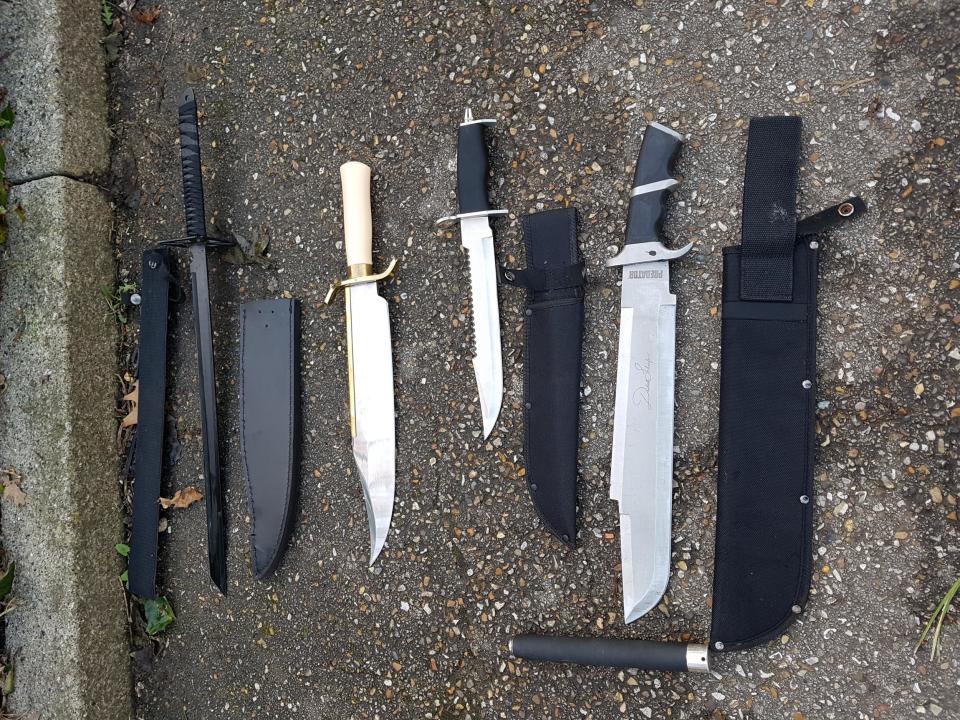Knives being hidden in children’s playgrounds amid rise in stop and search

Criminals are increasingly hiding knives in parks and children’s playgrounds amid a rise in stop-and-search operations, police have revealed.
A senior Metropolitan Police officer said weapons were being concealed in open spaces across London where young people can “access them quickly” when wanted without carrying them around.
Detective Chief Superintendent Lee Hill, head of the force’s violent crime taskforce, said eight knives were found in one playground in Islington last week alone.
“These knives could have fallen into the wrong hands. Worse, they could have been acquired by young children,” he told journalists at Scotland Yard.
Asked whether increased stop-and-search operations, including the use of controversial powers where everyone in designated areas can be checked without suspicion, was causing the change, Det Ch Supt Hill said: “I have no doubt that plays into it because offenders come alive to the increase in stop and search.
“That’s the reality of the situation, and we are seeing more weapons being concealed.”
Scotland Yard said 4,000 weapons were seized in stop-and-search operations in the year to March 2019.
Senior officers insisted they were taking the “right approach” to reducing violent crime, despite the number of homicides increasing from 133 in 2018 to 149 in 2019.
It was the highest total since 2008, rising despite a drop in murders in the rest of Britain.
Of the seven people killed so far this year in London, six were stabbed to death, and knives were the fatal weapons in almost 61 per cent of last year’s homicides.
Around two-thirds of the killings in 2019 took place in public, while 29 per cent were in domestic spaces and more than one-third of victims were under 25.
Overall, the capital saw almost 77,500 violent offences where someone was injured last year and 15,500 knife crime offences.
Assistant Commissioner Mark Simmons said police were deploying new technology and tactics in London, as well as using an increasing number of new recruits to implement “tried and tested” methods.
“The work we are doing is the right work to do but it takes time to have an impact,” he added. “We are turning round the idea that it’s ok to carry a knife.”
Mr Simmons said the drug trade was driving up violence in London through “territorial competitiveness” and disputes between gangs.
“There has been a shrinkage across public services including police and many parts of the public sector, [including] preventative services that support people and intervene with those who are involved in crime,” he added.
The officer said that when he worked in east London in the early 2000s “there was a very different picture of services than there are today”.
“Can police solve violence on our own?” he added. “No we can’t. Some of the causes of violence are beyond the power of police to deal with alone. We need a whole coalition of agencies.”
The Metropolitan Police have moved 100 officers into teams dedicated to violent crime from other parts of the force, and created two new homicide teams.
As well as targeting areas that are hotspots for violence, investigators are focusing on around 200 known criminals thought to pose the greatest risk of harm.
Commander Jane Connors, who is coordinating the response, said: ”They are a range of habitual knife carriers, prolific robbers, prolific violent offenders, so it is a range of different offenders within that who we believe are causing the highest harm and exploiting young people, driving violence.“
Read more
‘Lost generation’ of children created by austerity and gang crime
Knife crime hits 10-year high, figures reveal
Man arrested over 10-year-old boy stabbed in front of mother

